OMA’s Lafayette Anticipations in Paris is a ‘curatorial machine’
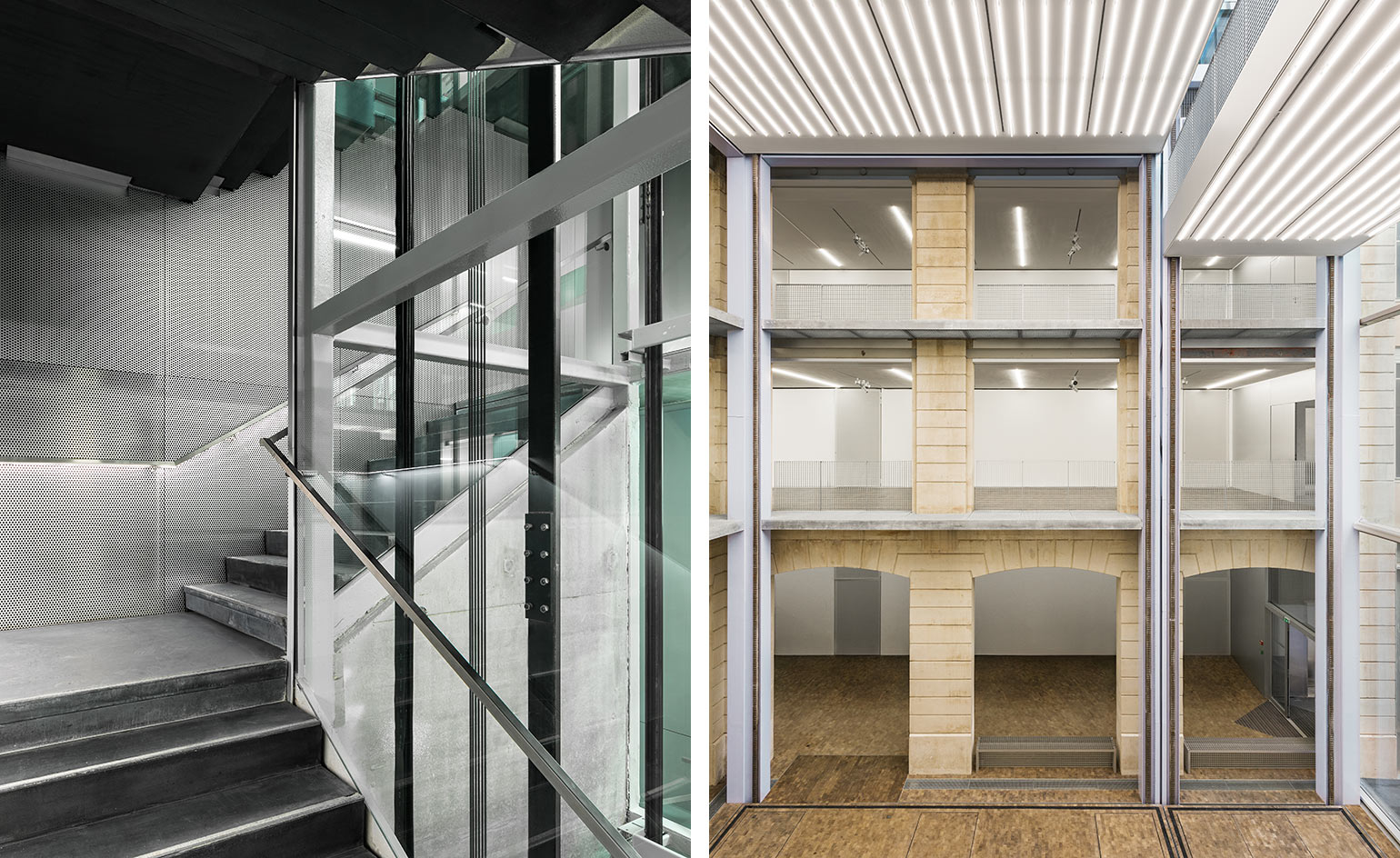
Architects often talk about flexible buildings, interiors that can easily adapt to different needs, ready to accommodate several functions. But you’d be hard pressed to find one that took the meaning of this as literally as Rem Koolhaas’ practice OMA did in its most recent project in Paris, Lafayette Anticipations, its first finished building in the French capital.
Faced with a 19th-century industrial structure on a relatively modest site in the Marais, and a brief from Fondation d’Entreprise Galeries Lafayette to create an art centre fit to host three to four annual shows, plus performances and workshops, the architects approached the design with a truly open mind.
The result, Lafayette Anticipations, is a ‘curatorial machine’ of a building, with an adaptable interior that gives spatial exibility a new meaning. ‘Paris is replete with prestigious collections, yet no place is absolutely dedicated to the work of artists or to the production of their pieces,’ says Guillaume Houzé, president of Fondation Galeries Lafayette.
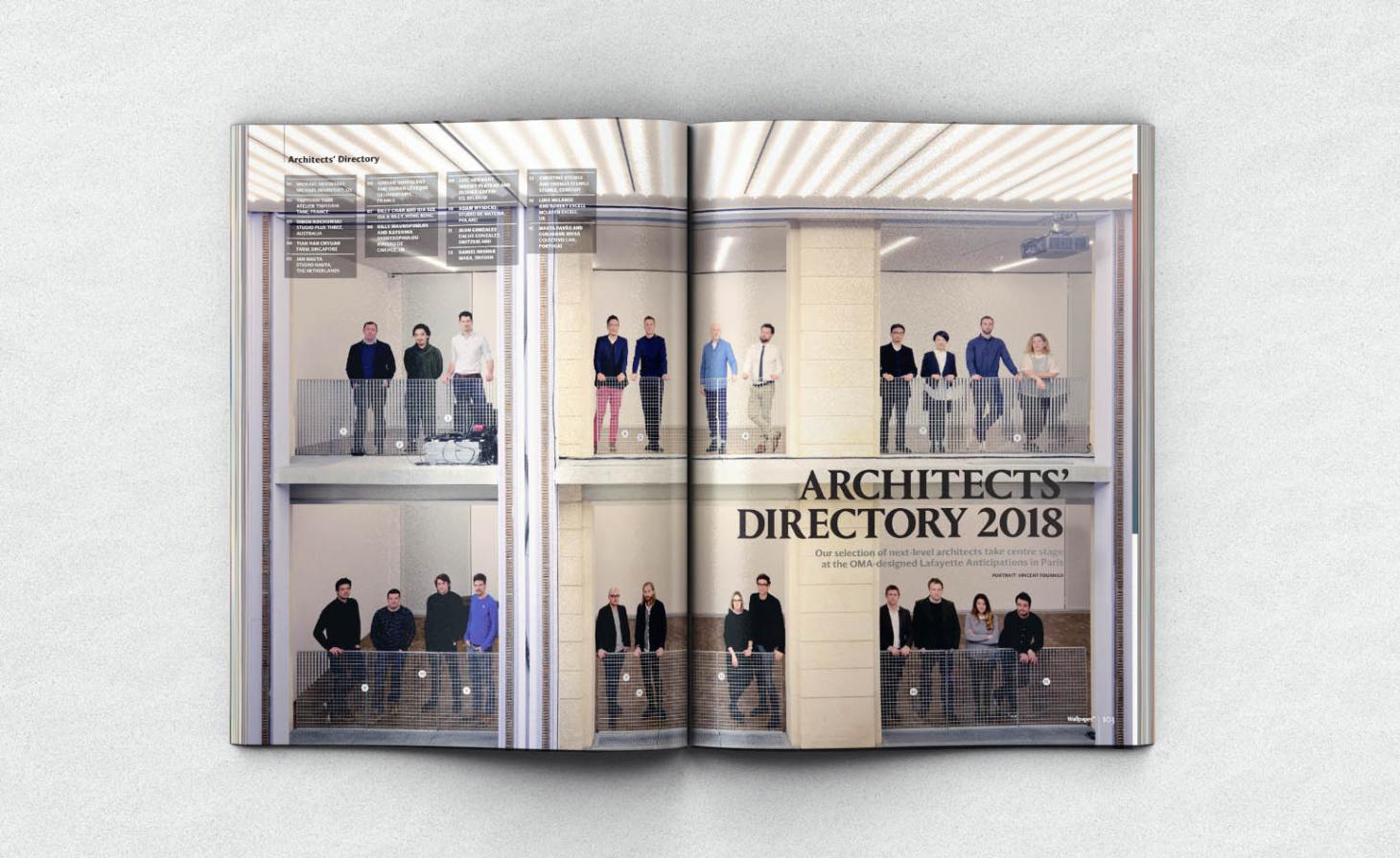
Our selection of next-level architects take centre stage at the OMA-designed Lafayette Anticipations in Paris.
‘There was thus an opportunity to establish, in the heart of the city, a toolbox giving creators the chance to multiply their capacities and actions, prompting the emergence of new forms and ideas, then sharing them with the greatest number. Within the 9 rue du Plâtre building, OMA made these aspirations a reality.’
In order to achieve this, OMA completely gutted the existing structure (built in 1891 by French architect Samuel Menjot de Dammartin for Xavier Ruel’s Bazar de l’Hôtel de Ville), keeping the interior simple and uncluttered, while transforming the courtyard at its heart into a glass ‘exhibition tower’ composed of four mobile platforms.
‘We were asked to accommodate an institution that offers carte blanche to artists in a building entirely protected by heritage regulations,’ says OMA project architect Clément Périssé.
‘Only a machine could solve this. By inserting a moveable mechanism into its courtyard, the only space open to intervention, we activated the entire existing building and gave it the potential to serve this ambitious project.’
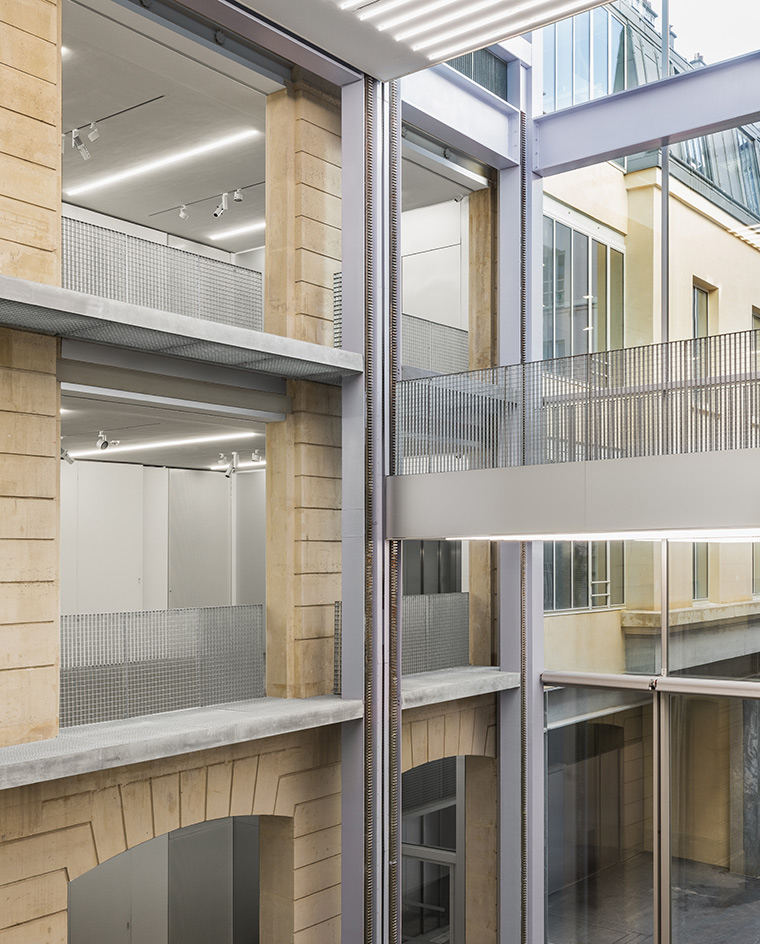
The central ‘rack and pin’ system allows the floors to move and be adaptable to the work on show.
The gallery now spans 2,200 sq m and includes 875 sq m of exhibition space, as well as production workshops, visitor engagement areas, an organic, vegan, gluten-free café-restaurant, and a store, within one beautifully composed, well-oiled ecosystem clad in timber, concrete, anodised aluminium, galvanised steel grating and limestone.
The gallery’s holistic vision also allows for artwork to be made on site, with its facilities open to professionals from a wide variety of disciplines, including fashion, design, visual arts and performance.
Referencing the opening show by American artist Lutz Bacher, Houzé says, ‘Numerous pieces presented in the show will have been produced in the Lafayette Anticipations workshop. Here, the diversity of the artists and their work will encourage new opportunities for spatial cohabitation within our modular environment.’
As originally featured in the July 2018 issue of Wallpaper* (W*232)
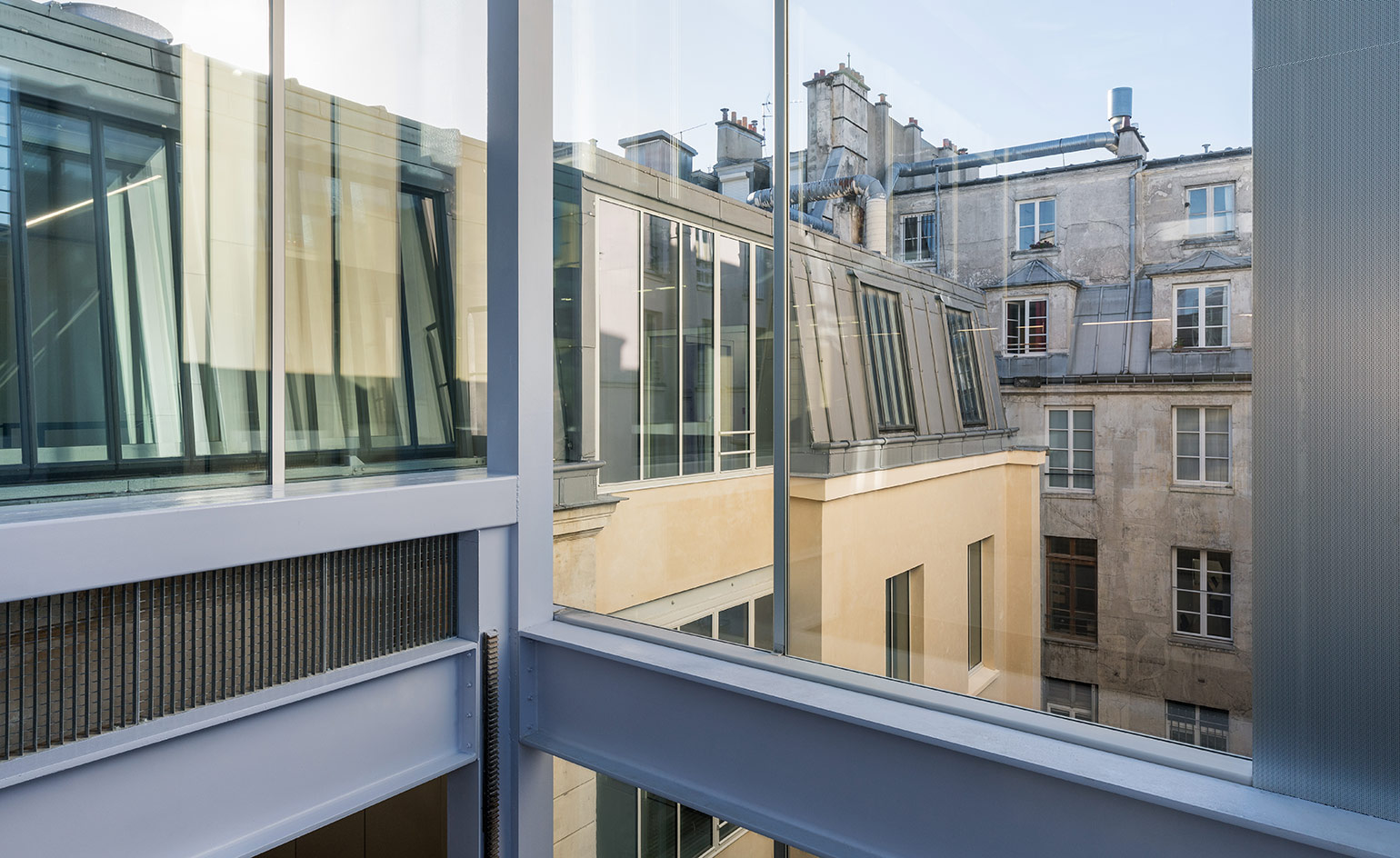
The building was a renovation of an existing 19th-century building at 9 rue du Platre in Paris
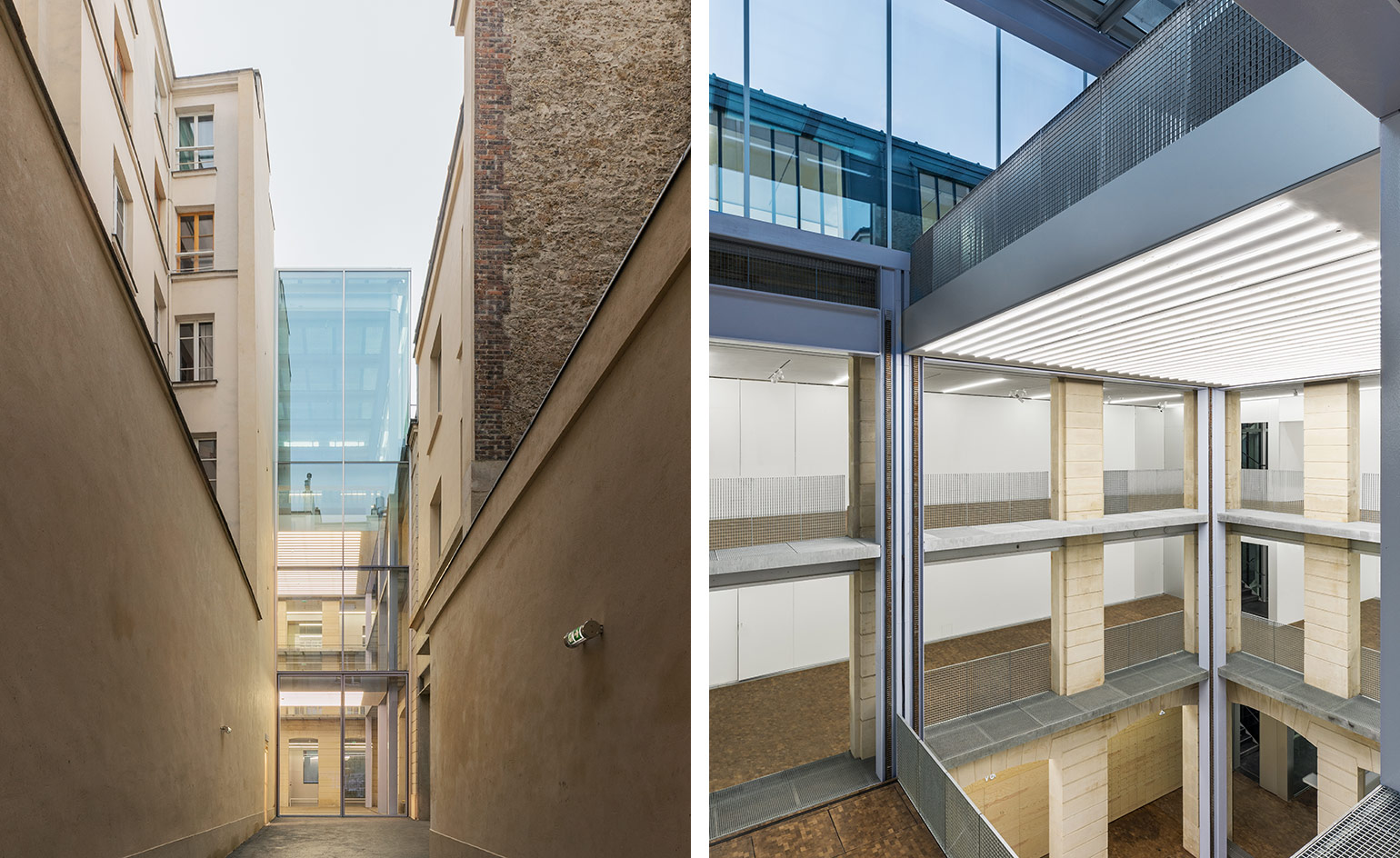
The building is a unique system of four moving floors which can move up and down within what used to be the building’s courtyard
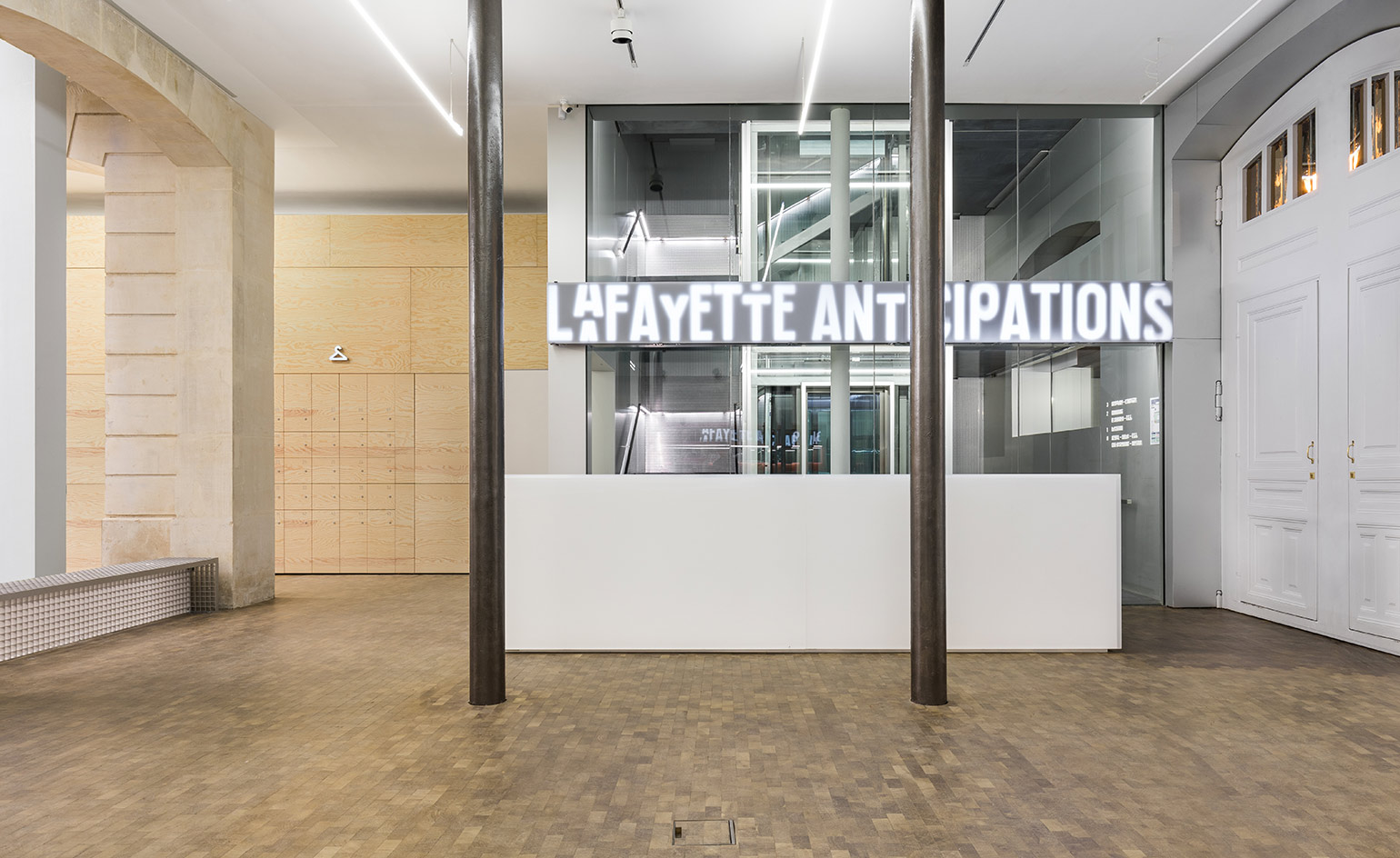
Each floor is divided into two parts, 49 different configurations are possible
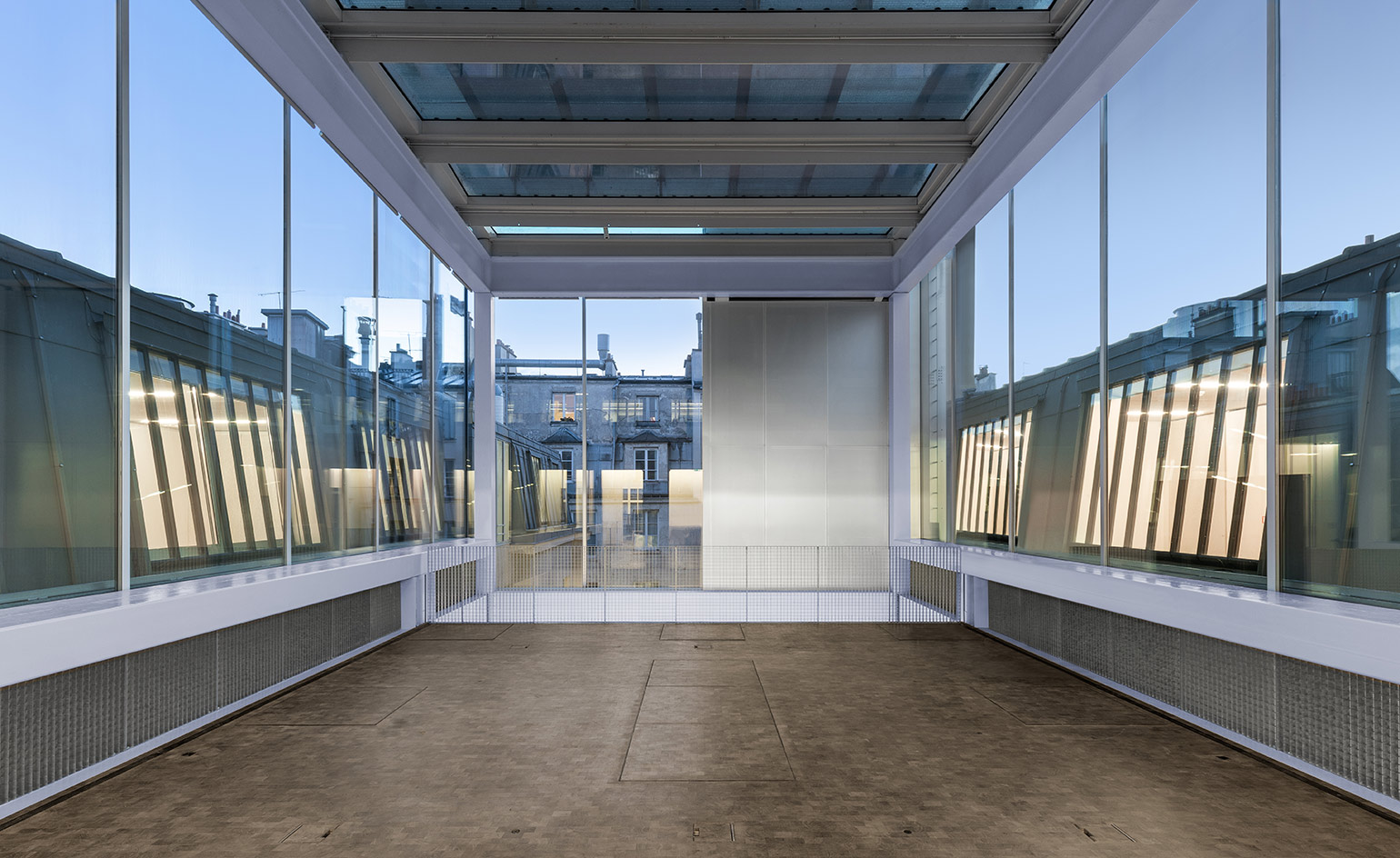
The space provides flexible conditions for performance and display as well as facilities for production on the lower ground floor

The U-shaped building is lined in sheet aluminium, with balcony walls created from OMA-preferred aluminium grid

Sheet aluminium and grids bring an industrial feeling to the interior
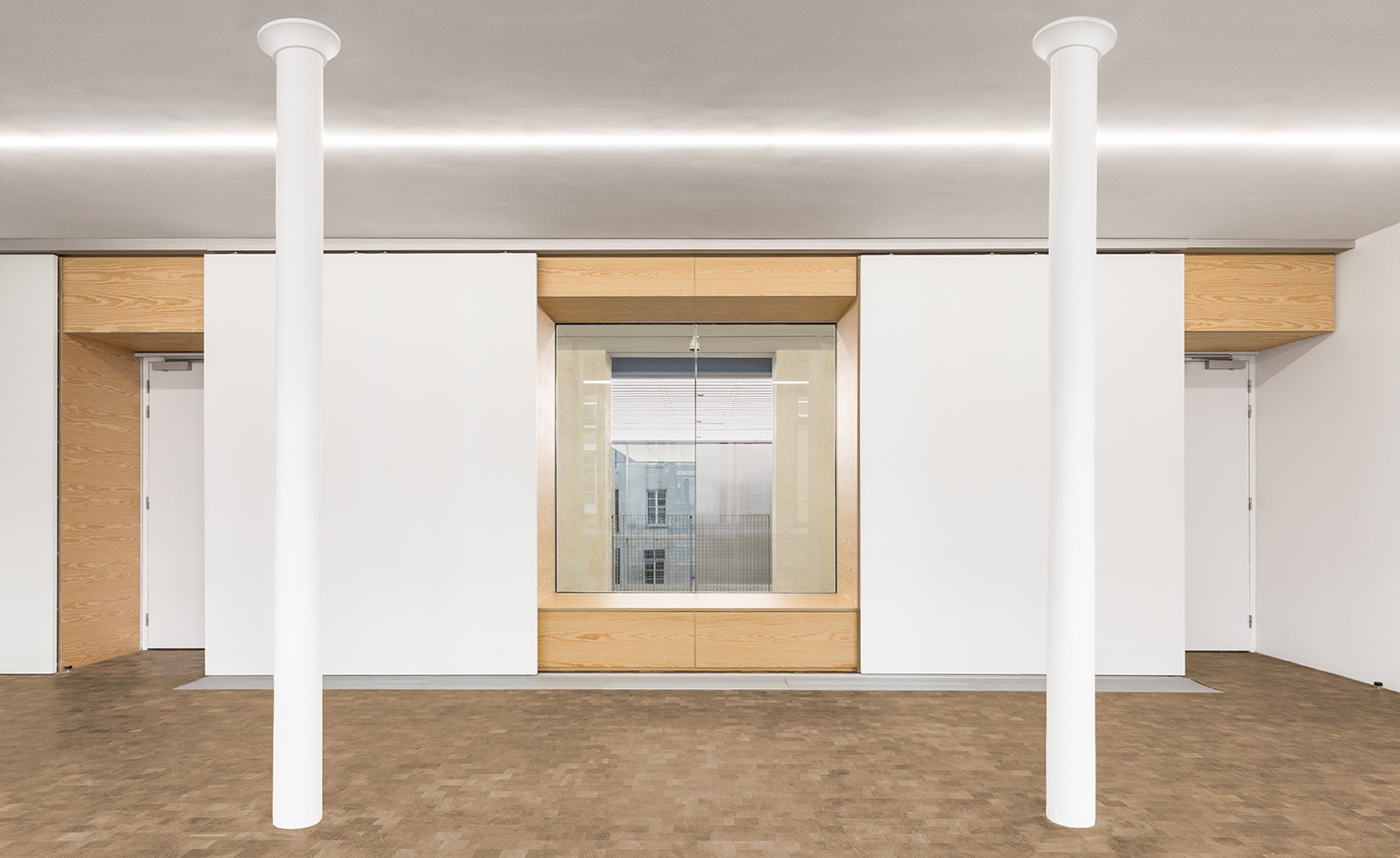
Maintaining elements of the building made the project more challenging, but also more exciting for the architects

The ‘machine’ at its centre appears analogue in the extreme – a highly readable rack and pin system enabled the floors to move – and its clasped inside sturdy industrial-standard I-beams, those these are painted in the delicated mauve shade of fleur de lin
INFORMATION
For more information, visit the OMA website and the Lafayette Anticipations website
ADDRESS
9 Rue du Plâtre
75004 Paris
France
Receive our daily digest of inspiration, escapism and design stories from around the world direct to your inbox.
Ellie Stathaki is the Architecture & Environment Director at Wallpaper*. She trained as an architect at the Aristotle University of Thessaloniki in Greece and studied architectural history at the Bartlett in London. Now an established journalist, she has been a member of the Wallpaper* team since 2006, visiting buildings across the globe and interviewing leading architects such as Tadao Ando and Rem Koolhaas. Ellie has also taken part in judging panels, moderated events, curated shows and contributed in books, such as The Contemporary House (Thames & Hudson, 2018), Glenn Sestig Architecture Diary (2020) and House London (2022).
-
 Apple Music’s new space for radio, live music and events sits in the heart of creative LA
Apple Music’s new space for radio, live music and events sits in the heart of creative LAApple Music’s Rachel Newman and global head of workplace design John De Maio talk about the shaping of the company’s new Los Angeles Studio
-
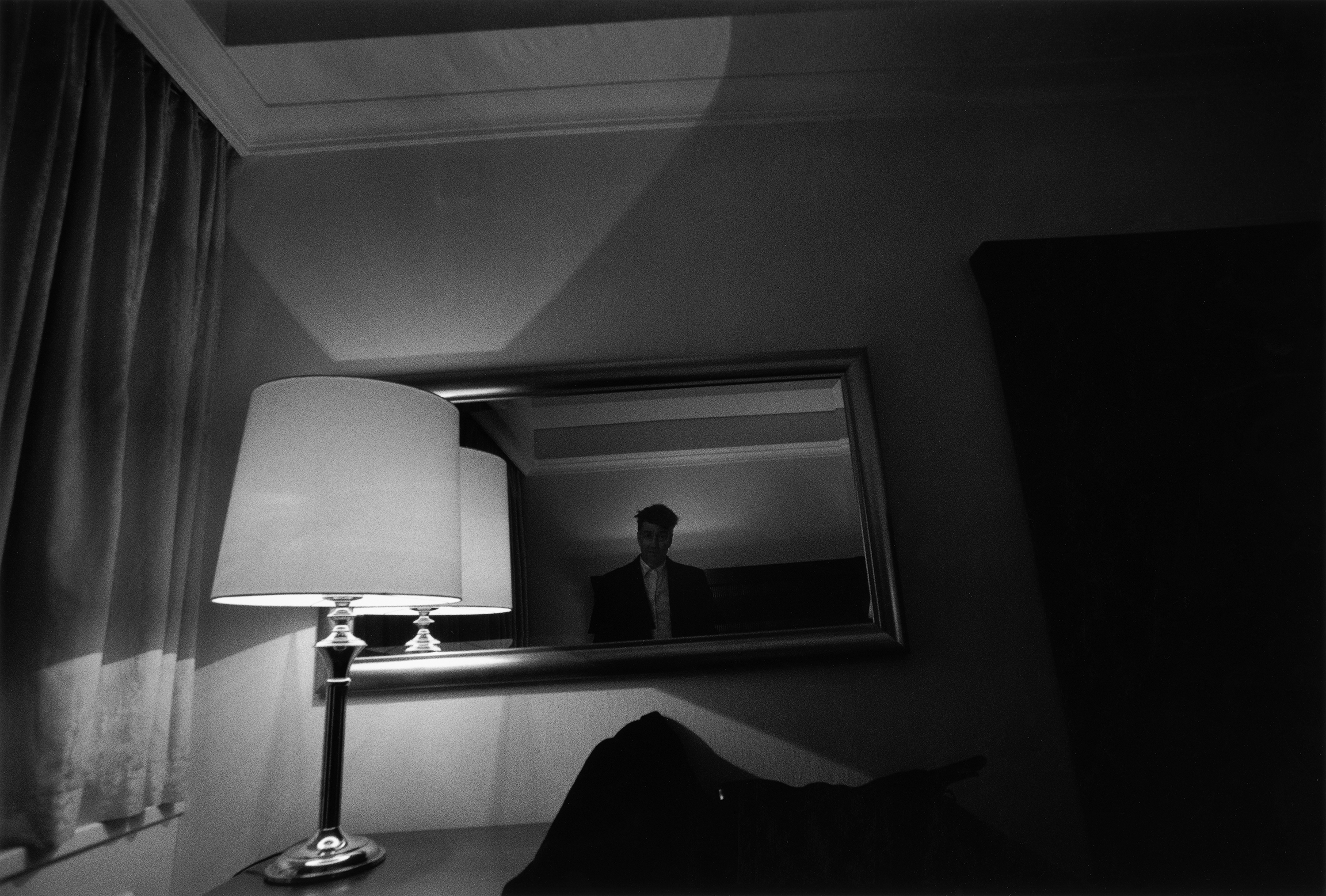 David Lynch’s photographs and sculptures are darkly alluring in Berlin
David Lynch’s photographs and sculptures are darkly alluring in BerlinThe late film director’s artistic practice is the focus of a new exhibition at Pace Gallery, Berlin (29 January – 22 March 2026)
-
 Roland and Karimoku expand their range of handcrafted Kiyola digital pianos
Roland and Karimoku expand their range of handcrafted Kiyola digital pianosThe new Roland KF-20 and KF-25 are the latest exquisitely crafted digital pianos from Roland, fusing traditional furniture-making methods with high-tech sound
-
 Inez & Vinoodh unveil romantic new photography series in Paris
Inez & Vinoodh unveil romantic new photography series in ParisA series of portraits of couple Charles Matadin and Natalie Brumley, created using an iPhone in Marfa, Texas, goes on show in Paris
-
 Inside Davé, Polaroids from a little-known Paris hotspot where the A-list played
Inside Davé, Polaroids from a little-known Paris hotspot where the A-list playedChinese restaurant Davé drew in A-list celebrities for three decades. What happened behind closed doors? A new book of Polaroids looks back
-
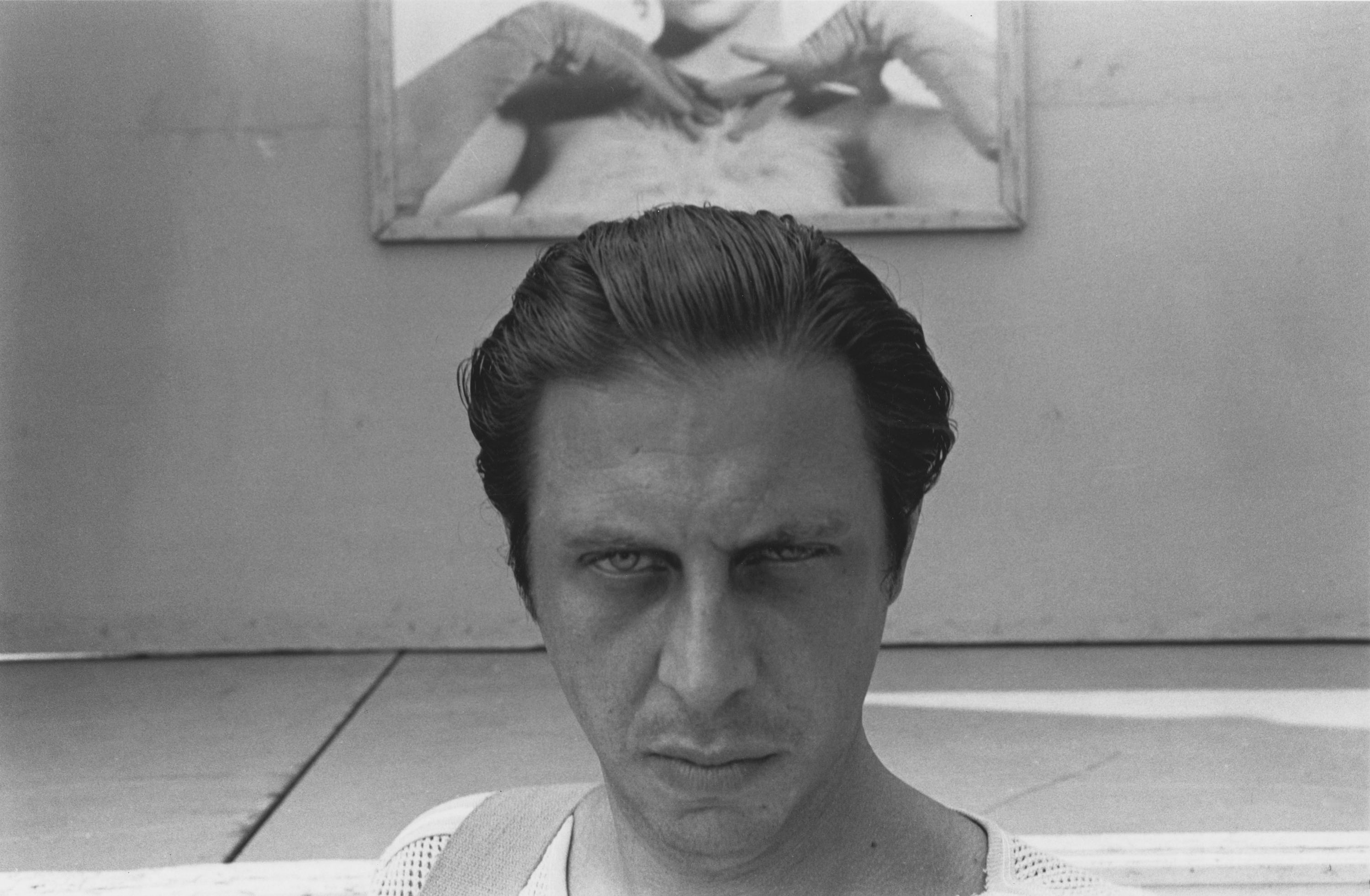 All eyes on Paris Photo 2025 – focus on our highlights
All eyes on Paris Photo 2025 – focus on our highlightsThe world's most important international photography fair brings together iconic and emerging names, galleries large and small – and there’s much to covet
-
 Ten things to see and do at Art Basel Paris 2025
Ten things to see and do at Art Basel Paris 2025Art Basel Paris takes over the city from 24-26 October. Here are the highlights, from Elmgreen & Dragset to Barbara Kruger and Dash Snow
-
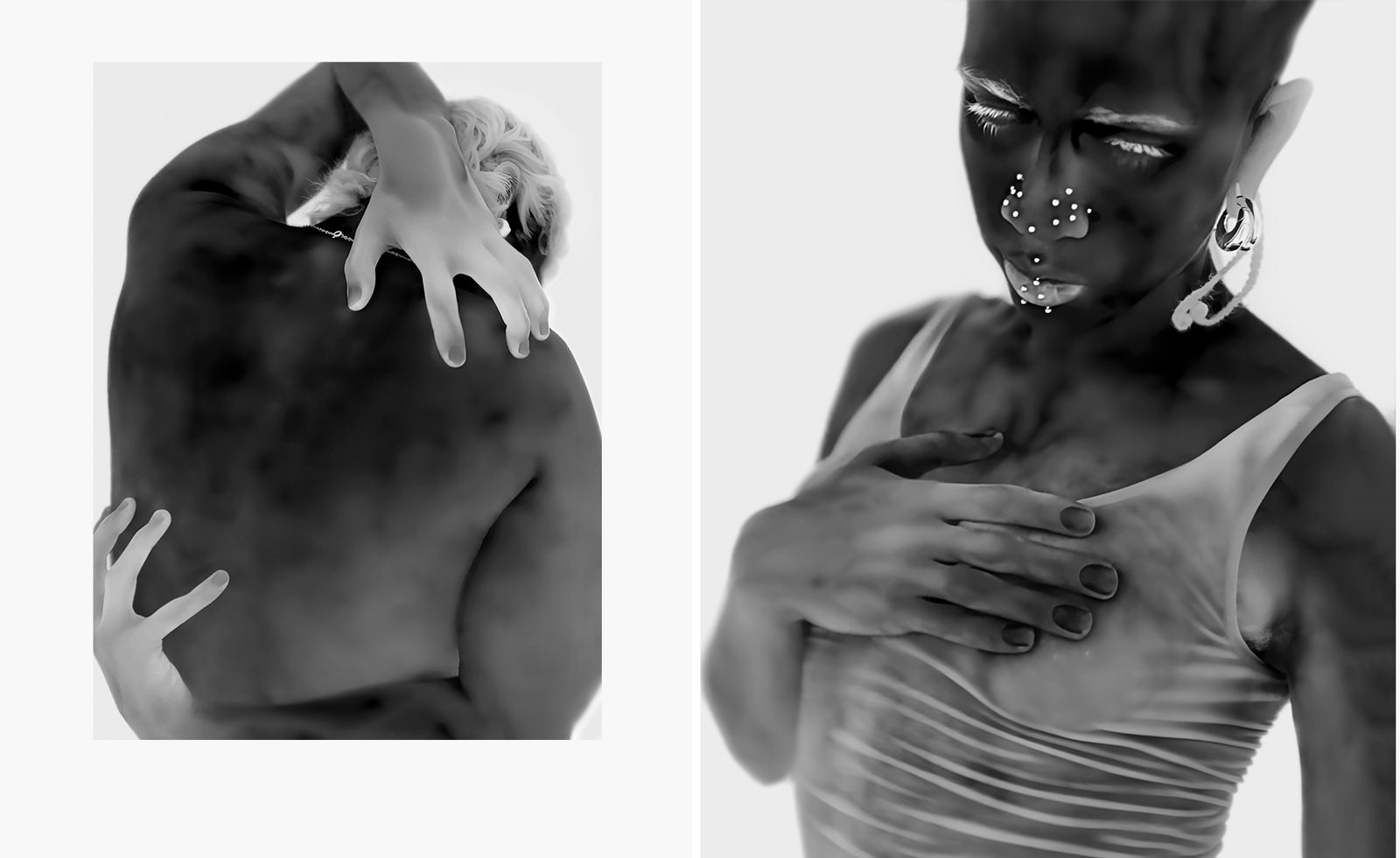 Yulia Mahr digs beneath the skin in her modern update of classic Greek statues in Paris
Yulia Mahr digs beneath the skin in her modern update of classic Greek statues in ParisIn 'The Church of Our Becoming', on view at the Courtyard at Dover Street Market Paris, Yulia Mahr celebrates real human bodies
-
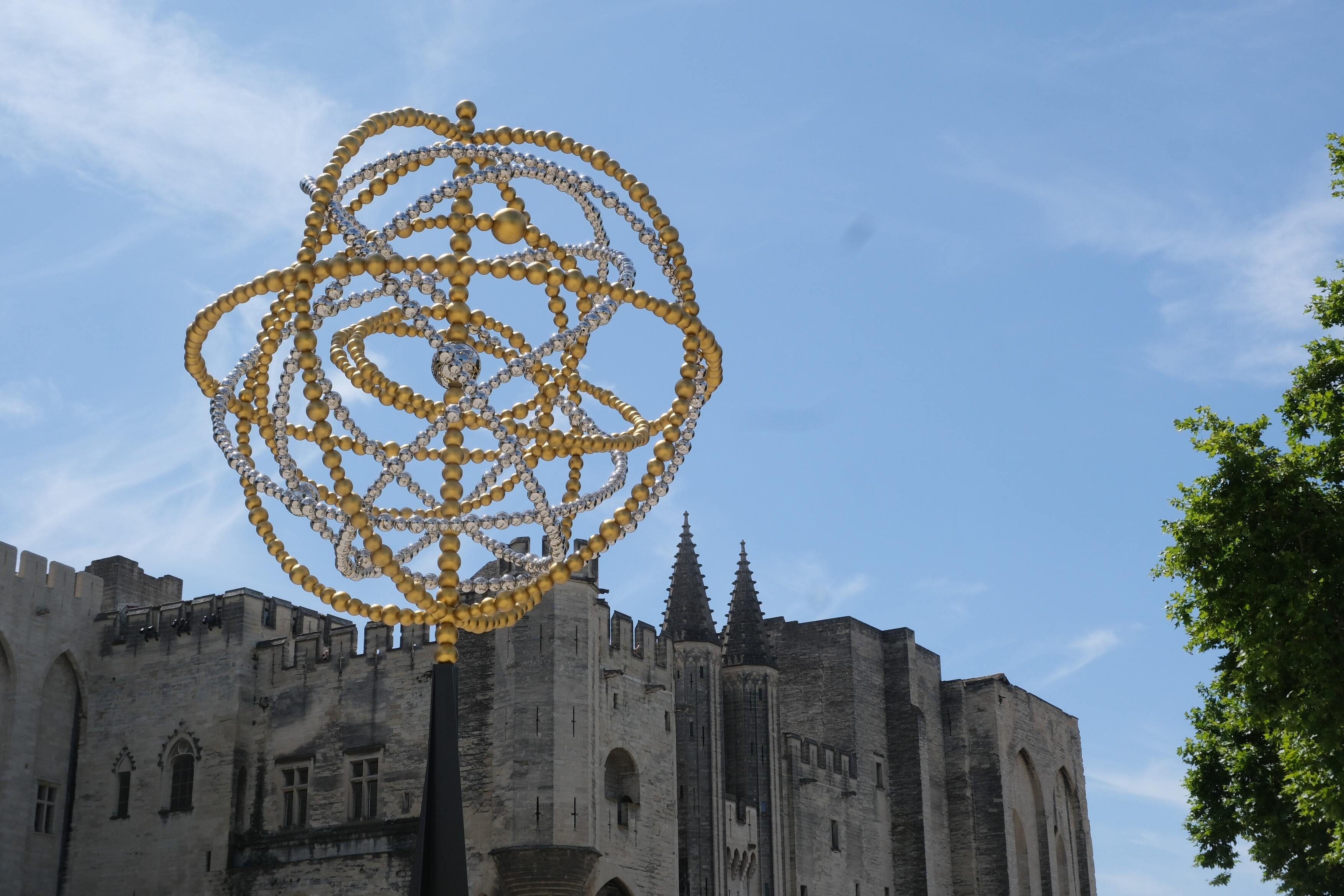 Jean-Michel Othoniel takes over Avignon for his biggest ever exhibition
Jean-Michel Othoniel takes over Avignon for his biggest ever exhibitionOriginally approached by Avignon to mark their 25th anniversary as the European Capital of Culture, Jean-Michel Othoniel more than rose to the challenge, installing 270 artworks around the city
-
 Joel Quayson’s winning work for Dior Beauty at Arles considers the theme ‘Face-to-Face’ – watch it here
Joel Quayson’s winning work for Dior Beauty at Arles considers the theme ‘Face-to-Face’ – watch it hereQuayson, who has won the 2025 Dior Photography and Visual Arts Award for Young Talents at Arles, imbues his winning work with a raw intimacy
-
 What to see at Rencontres d’Arles 2025, questioning power structures in the state and family
What to see at Rencontres d’Arles 2025, questioning power structures in the state and familySuppressed memories resurface in sharply considered photography at Rencontres d'Arles 2025. Here are some standout photographers to see